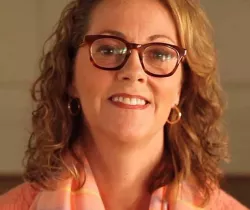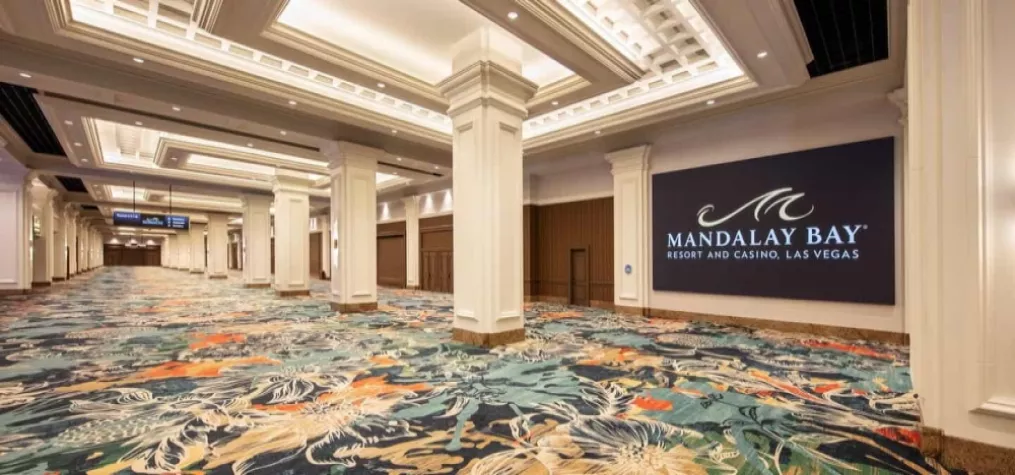Amy Button

Amy Button is a copywriter and content marketing manager for Freeman, the global leader of events. She lives in Texas but attends virtual events all over the globe.

Right now, health is on everyone’s mind, personally and professionally. While we don’t know how long this disruption will last, we do know this: the healthiest way to deliver successful events (and strong ROI) is to adapt to our changing industry and find new ways to enhance the virtual experience.
Healthcare association event leaders like the American Heart Association, the American Society of Hematology and the Radiological Society of North America have done just that, demonstrating incredible ingenuity to make their virtual events successful and engaging (note that these findings can apply to many event types and verticals!).
Try these seven strategic cures to help ensure the health of your virtual events and position your organization to not only adapt, but also lead.
Like everyone in the industry, as early as April, association staff had to juggle contingencies on hosting (or not) on-site meetings while trying to manage expectations on content and format. As it became clear that COVID was impacting not only community health, but also affecting travel and funding, planners moved quickly into contingency planning mode — well before any cancellations were made.
The shift quickly revealed that mirroring the on-site event was not feasible — and that the number of sessions and speakers would need to be prioritized. Developing a view on when to host the meeting also prompted discussion and debate. Finally, there was recognition that virtual was such a new medium it was critical to find a partner experienced in delivering virtual events in a COVID world, which also could provide insights on effective virtual practices.
Notably, the organizers for all three events focused on a three-pronged remedy — strategy, creativity and programming — to steer them through uncharted territory. Working with Freeman, all three organizers were able to rely on insights from prior events and registration trends as well as feedback on how best to focus.
Once they made those tough decisions, their strategy, creative foundation and program allowed teams to move quickly without issues.
Some experiences are a bit difficult to recreate virtually, but as it turns out, education is not one of them. In fact, all of these organizers had strong attendance and engagement with their educational sessions.
What went well? For starters, attendees enjoyed the remote flexibility, as well as being able to spread their learning out over weeks or even months instead of one jam-packed, drink-from-the-firehose week. At all three meetings, attendees also engaged throughout the day with various live streams that provided the latest developments in healthcare.
Even better, attendees weren’t the only ones who benefitted. After the typical in-person presentation, a speaker might receive a handful of comments. But many speakers found that after presenting virtually, they received feedback in a variety of forms from peers and colleagues — far more than expected. In many cases, stalled connections were reinvigorated.
Consider these additional healing hints when planning virtual education:
Another way organizers and meeting planners can move to virtual smoothly is to have the plan as ready as possible before any formal announcements. This is especially important when it comes to relationships with exhibitors and sponsors. These partners want to know what will happen with their spend, so make sure corporate packages are ready in line with the announcement.
Exhibitors and sponsors may also seek guidance on how to increase ROI in this new environment.
For three recent healthcare events, high-performing exhibitors and sponsors shared a few key characteristics:
Communication is another important element. Exhibitors and sponsors know virtual events can generate a wealth of data, so they expect regular reporting and proactive monitoring from event organizers. Providing actionable, timely feedback on participation will help partners course-correct if needed and ultimately earn a much better ROI.
All three healthcare organizations reported a major ramp-up in registrations in the last three weeks before the event. When attendees don’t need to book flights or hotels, registration urgency disappears.
While this last-minute rush may cause stress, a good marketing strategy is to ensure a detailed understanding of key audience segments and maintain momentum throughout the registration period, especially in the final weeks. However, be mindful that marketing a virtual event requires very different tactics and tools, as well as plenty of agility. Event marketers will need to pay careful attention to messaging and which channels work best. Then prepare to adapt as needed.
Even if an event team is a well-oiled machine, virtual events will require adding some different faces to the mix and increasing collaboration across departments.
The best way to make this collaboration work is to have a Joint Leadership Task Force with weekly check-ins, a structured agenda, and time set aside to discuss and address unexpected surprises. A key part of this team is the executive producer role — someone (or a few knowledgeable folks) who are taking a holistic view across organizations to ensure event deliverables are being completed to scope, on a timely basis.
Smart event planners know organization is paramount, so they have the bandwidth for hurdles that inevitably pop up. In the digital world, this principle applies tenfold.
Content needs to be received, reviewed and validated prior to uploading. Build in time to develop testing, run it and validate any changes. Plans must include enough leeway to accommodate the inevitable last-minute additions of critical content or speakers. For example, when the organizations had the opportunity to add Dr. Anthony Fauci (lead of the Coronavirus Task Force and incoming Chief Medical Advisor for the Biden administration), the teams were ready to incorporate the keynote speaker because of stringent deadline practices.
Sticking to deadlines is a must for any event, but even more so with virtual because planning requires a much longer runway. If time frames aren’t met, you could lose out on dynamic and captivating content.
Finally, be sure to communicate deadlines early and often to exhibitors and sponsors. They have their own internal milestones to establish, so the earlier they’re informed, the better.
Virtual events will continue to evolve, incorporating more “only in-person” benefits (like networking) and other unique experiential elements that give live events the “wow!” factor. Virtual does require different timelines and strategies to deliver successfully, but it isn’t going away. No matter the medium, it’s essential to set new expectations and keep an open mind for new possibilities.
So what’s next? The hybrid model — a combination of in-person and virtual experiences. And just like any event, the fundamental approach to success remains the same: Determine the strategy, understand key audiences (separating remote from in-person audience needs), set appropriate agendas for each medium, and develop the appropriate audience journeys. In the case of hybrid, those journeys would be virtual-only or onsite-only.
Remember to also leverage insights and benchmarks from prior meetings to drive the strategy. Then, consistently evaluate the data (and share findings with your partners!) to uncover what’s working and what’s not, so attendees, sponsors and exhibitors all receive maximum value.
We’re all in this together as an industry, and we all want the same thing: Events that are enjoyable, safe, rewarding and successful. We continue to innovate, using data and event technology to help virtual events — or any type of event — be cost-efficient, effective and simply more memorable.

Add new comment